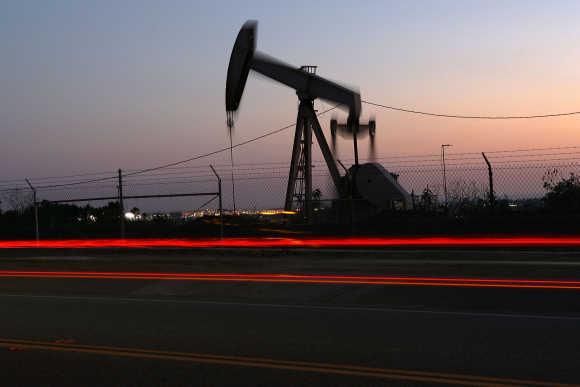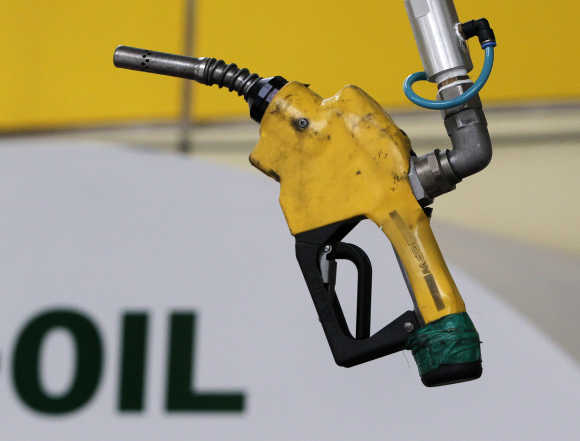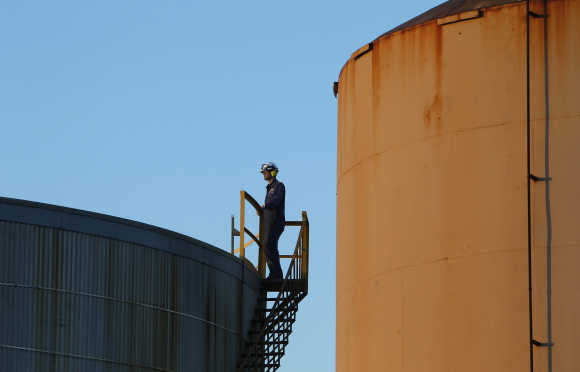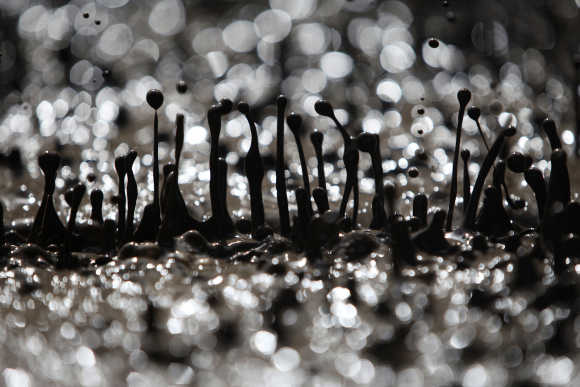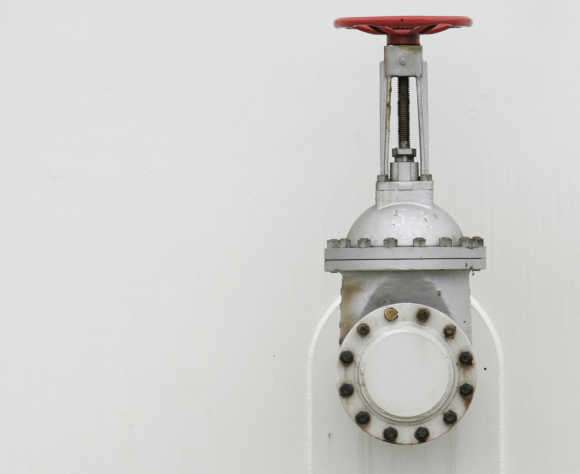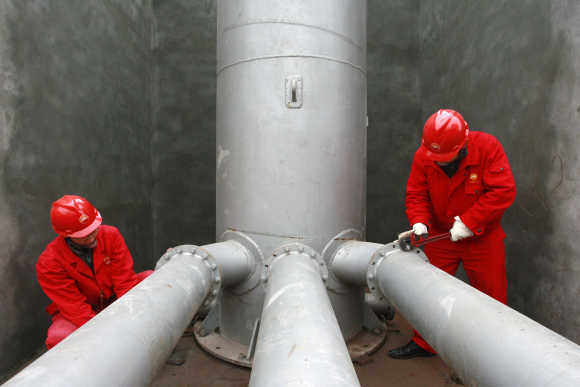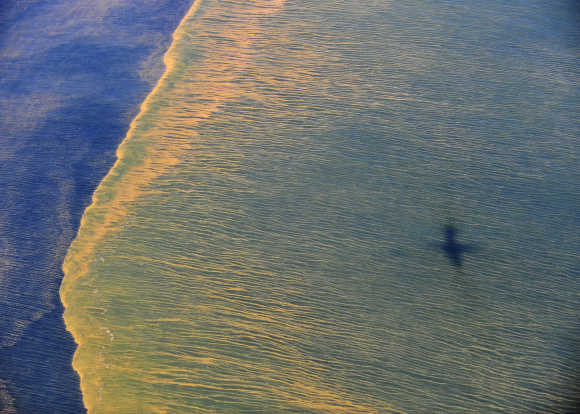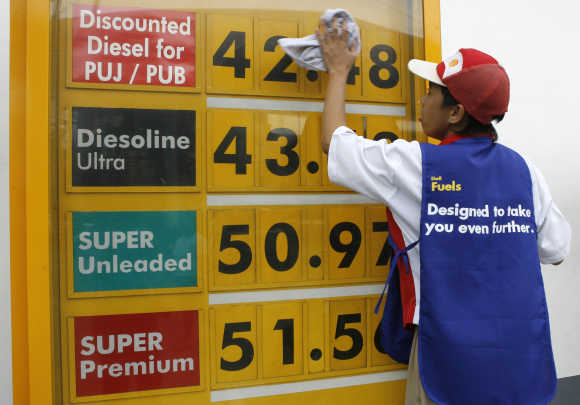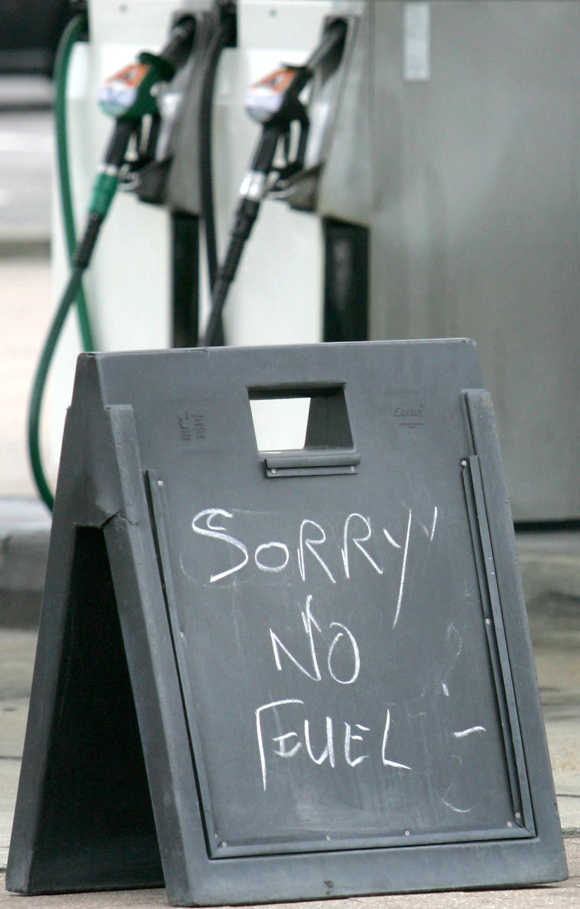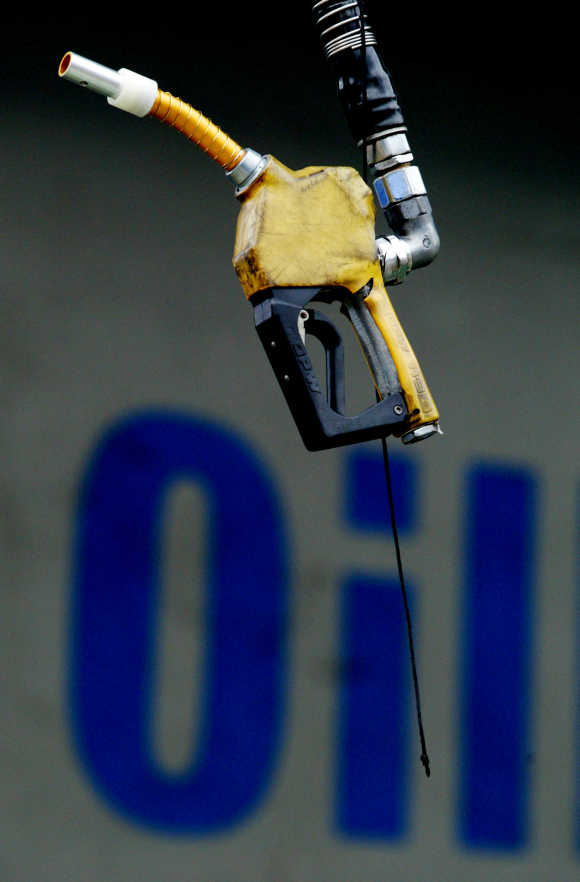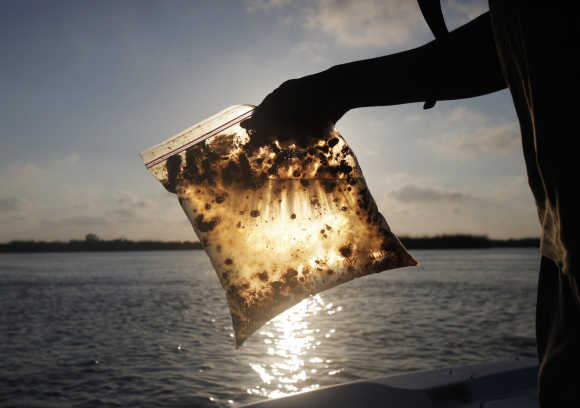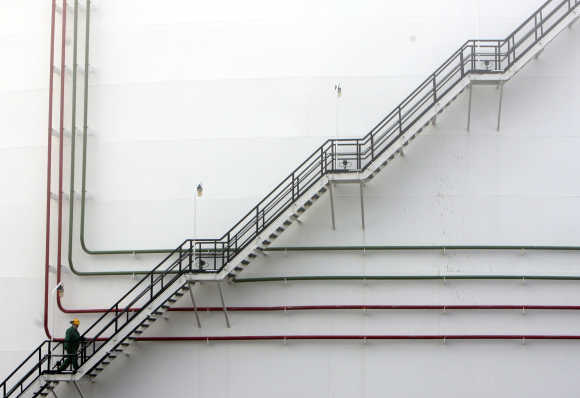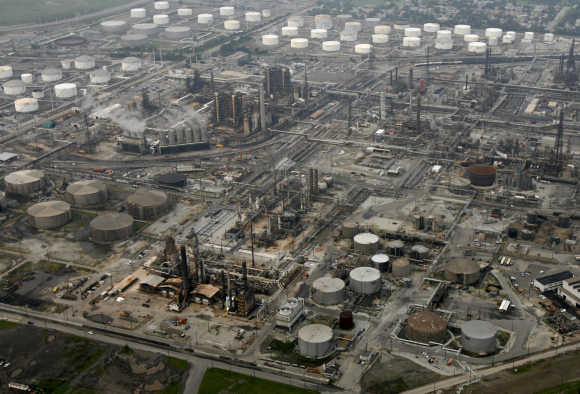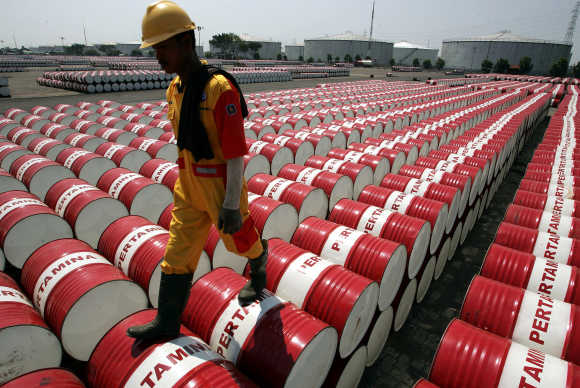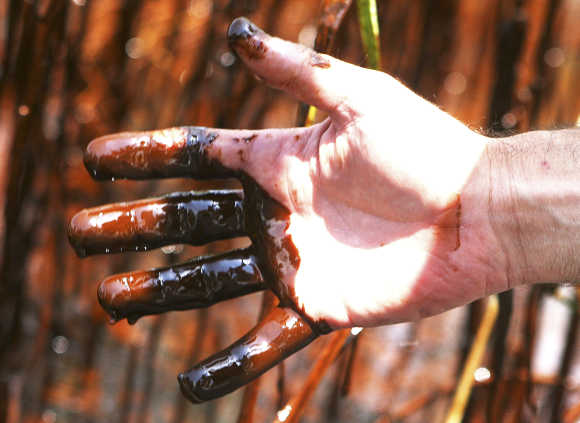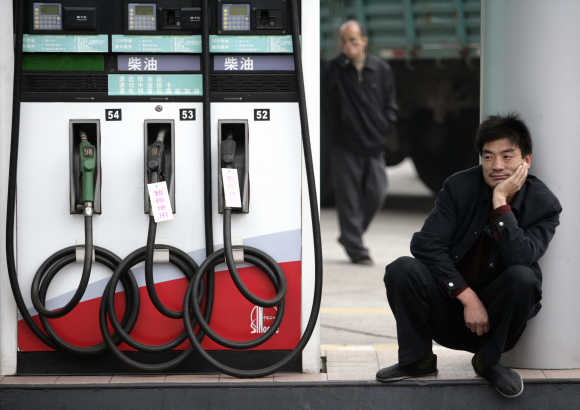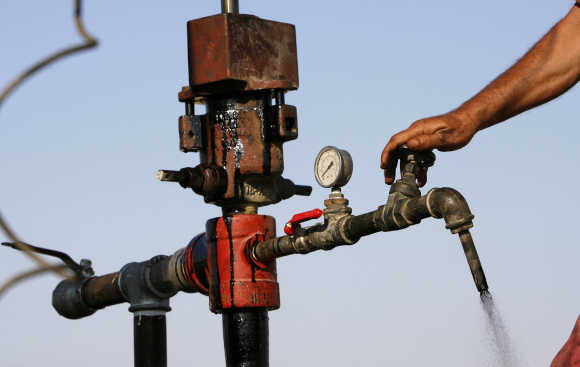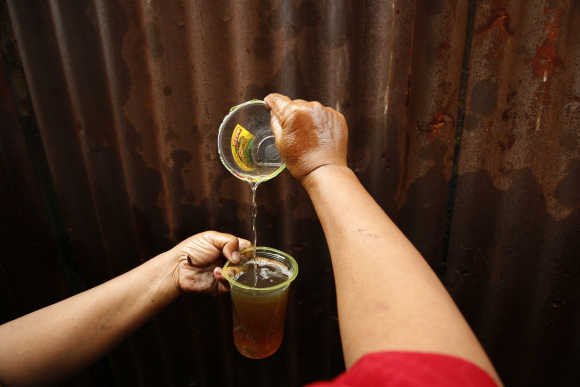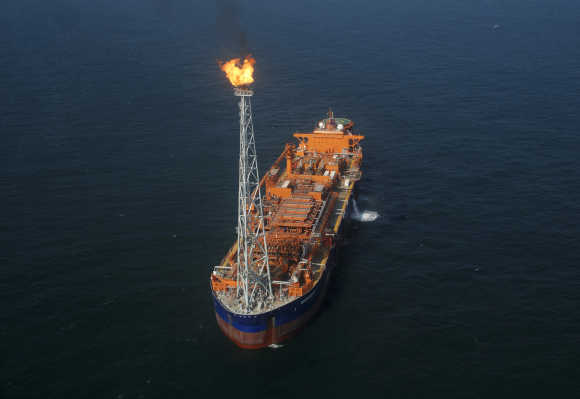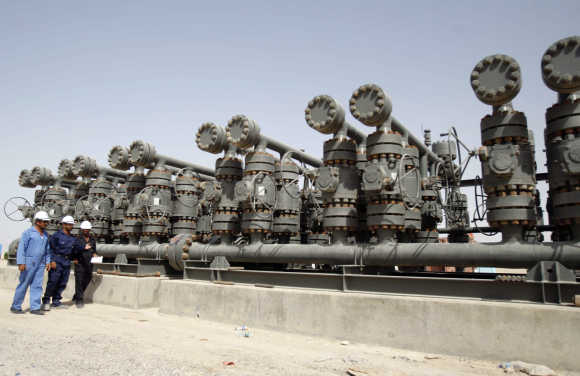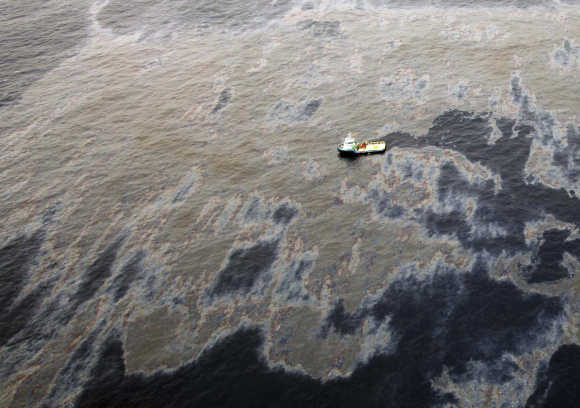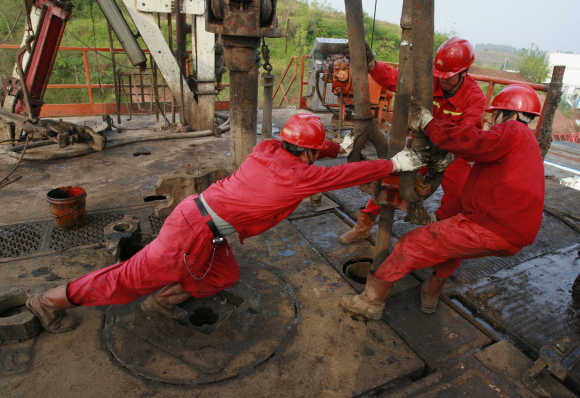 | « Back to article | Print this article |
Amazing images show how oil is extracted
Crude oil, or petroleum, is recovered mostly through oil drilling. This comes after the studies of geology, sedimentary basin analysis, reservoir characterisation, and it is then refined and separated, most easily by boiling point, into a large number of consumer products, from petrol and kerosene to asphalt and chemical reagents used to make plastics and pharmaceuticals.
Let's have a look at how the black gold is extracted and refined.
Click NEXT to see more...
Amazing images show how oil is extracted
Petroleum is used in manufacturing a wide variety of materials, and it is estimated that the world consumes about 88 million barrels each day.
Click NEXT to read more...
Amazing images show how oil is extracted
The use of fossil fuels such as petroleum can have a negative impact on Earth's biosphere, releasing pollutants and greenhouse gases into the air and damaging ecosystems through events such as oil spills.
Click NEXT to read more...
Amazing images show how oil is extracted
Concern over the depletion of the earth's finite reserves of oil, and the effect this would have on a society dependant on it, is a field known as peak oil.
Click NEXT to read more...
Amazing images show how oil is extracted
The petroleum industry includes the global processes of exploration, extraction, refining, transporting (often by oil tankers and pipelines), and marketing petroleum products.
Click NEXT to read more...
Amazing images show how oil is extracted
The largest volume products of the industry are fuel oil and gasoline (petrol). Petroleum is also the raw material for many chemical products, including pharmaceuticals, solvents, fertilisers, pesticides, and plastics.
Click NEXT to read more...
Amazing images show how oil is extracted
The industry is usually divided into three major components: upstream, midstream and downstream. Midstream operations are usually included in the downstream category.
Click NEXT to read more...
Amazing images show how oil is extracted
Petroleum is vital to many industries, and is of importance to the maintenance of industrial civilisation itself, and thus is a critical concern for many nations.
Click NEXT to read more...
Amazing images show how oil is extracted
Oil accounts for a large percentage of the world's energy consumption, ranging from as low of 32 per cent for Europe and Asia, up to a high of 53 per cent for the Middle East.
Click NEXT to read more...
Amazing images show how oil is extracted
Other geographic regions' consumption patterns are as follows: South and Central America (44 per cent), Africa (41 per cent), and North America (40 per cent).
The world consumes 30 billion barrels of oil per year, with developed nations being the largest consumers.
Click NEXT to read more...
Amazing images show how oil is extracted
The United States consumed 25 per cent of the oil produced in 2007. The production, distribution, refining, and retailing of petroleum taken as a whole represents the world's largest industry in terms of dollar value.
Click NEXT to read more...
Amazing images show how oil is extracted
Governments such as the United States government provide a heavy public subsidy to petroleum companies, with major tax breaks at virtually every stage of oil exploration and extraction, including for the costs of oil field leases and drilling equipment.
Click NEXT to read more...
Amazing images show how oil is extracted
Imperial Russia produced 3,500 tonnes of oil in 1825 and doubled its output by mid-century. After oil drilling began in what is now Azerbaijan in 1848, two large pipelines were built in the Russian Empire: the 833km long pipeline to transport oil from the Caspian to the Black Sea port of Batumi (Baku-Batumi pipeline), completed in 1906, and the 162km long pipeline to carry oil from Chechnya to the Caspian.
Click NEXT to read more...
Amazing images show how oil is extracted
At the turn of the 20th century, Imperial Russia's output of oil, almost entirely from the Apsheron Peninsula, accounted for half of the world's production and dominated international markets.
Click NEXT to read more...
Amazing images show how oil is extracted
Nearly 200 small refineries operated in the suburbs of Baku by 1884. As a side effect of these early developments, the Apsheron Peninsula emerged as the world's "oldest legacy of oil pollution and environmental negligence".
Click NEXT to read more...
Amazing images show how oil is extracted
In 1878, Ludvig Nobel and his Branobel company "revolutionised oil transport" by commissioning the first oil tanker and launching it on the Caspian Sea.
Click NEXT to read more...
Amazing images show how oil is extracted
The first modern oil refineries were built by Ignacy Lukasiewicz near Jaslo (then in the dependent Kingdom of Galicia and Lodomeria in Central European Galicia), Poland from 1854-56.
Click NEXT to read more...
Amazing images show how oil is extracted
These were initially small as demand for refined fuel was limited. The refined products were used in artificial asphalt, machine oil and lubricants, in addition to Lukasiewicz's kerosene lamp.
As kerosene lamps gained popularity, the refining industry grew in the area.
Click NEXT to read more...
Amazing images show how oil is extracted
In Canada, oil extraction began in 1858 in Oil Springs, Ontario. The first oil drilling in the United States began in 1859, when oil was successfully drilled in Titusville, Pennsylvania.
Click NEXT to read more...
Amazing images show how oil is extracted
In the first quarter of the 20th century, the United States overtook Russia as the world's largest oil producer.
By the 1920s, oil fields had been established in many countries including Canada, Poland, Sweden, the Ukraine, the United States, Peru and Venezuela.
Click NEXT to read more...
Amazing images show how oil is extracted
The first successful oil tanker, the Zoroaster, was built in 1878 in Sweden, designed by Ludvig Nobel. It operated from Baku to Astrakhan. A number of new tanker designs were developed in the 1880s.
Click NEXT to read more...
Amazing images show how oil is extracted
In the early 1930s the Texas Company developed the first mobile steel barges for drilling in the brackish coastal areas of the Persian Gulf.
Click NEXT to read more...
Amazing images show how oil is extracted
In 1937 Pure Oil Company (now part of Chevron Corporation) and its partner Superior Oil Company (now part of ExxonMobil Corporation) used a fixed platform to develop a field in 14 feet of water, one mile offshore of Calcasieu Parish, Louisiana.
Click NEXT to read more...
Amazing images show how oil is extracted
After World War II ended, the countries of the Middle East took the lead in oil production from the United States.
Click NEXT to read more...
Amazing images show how oil is extracted
Important developments since World War II include deep-water drilling, the introduction of the Drillship, and the growth of a global shipping network for petroleum relying upon oil tankers and pipelines.
Click NEXT to read more...
Amazing images show how oil is extracted
In the 1960s and 1970s, multi-governmental organisations of oil-producing nations Opec and Oapec played a major role in setting petroleum prices and policy.
Click NEXT to read more...
Amazing images show how oil is extracted
Oil Spills and their cleanup have become an issue of increasing political, environmental, and economic importance.
Click NEXT to read more...
Amazing images show how oil is extracted
The petroleum industry generally classifies crude oil by the geographic location it is produced in (e.g. West Texas Intermediate, Brent, or Oman), its API gravity (an oil industry measure of density), and its sulfur content.
Crude oil may be considered light if it has low density or heavy if it has high density; and it may be referred to as sweet if it contains relatively little sulfur or sour if it contains substantial amounts of sulfur.
Click NEXT to read more...
Amazing images show how oil is extracted
The geographic location is important because it affects transportation costs to the refinery.
Light crude oil is more desirable than heavy oil since it produces a higher yield of petrol, while sweet oil commands a higher price than sour oil because it has fewer environmental problems and requires less refining to meet sulfur standards imposed on fuels in consuming countries.
Click NEXT to read more...
Amazing images show how oil is extracted
Each crude oil has unique molecular characteristics which are understood by the use of crude oil assay analysis in petroleum laboratories.
